This was one of the most fascinating sessions during NAB 2024. The lecture titled “The Art and Science of IMAX” sheds light on IMAX filmmaking and the upcoming next-generation of IMAX 65mm film cameras. All details are below.

The new IMAX 65mm film cameras
In a fascinating NAB 2024 session titled “The Art and Science of IMAX” Bruce Marko, who is SVP Head of Post Production and Image Capture at IMAX, elaborated regarding the upcoming new fleet of IMAX film cameras. If you are eager to learn more about these new 65mm 15-perf beasts, you are in the right place. Explore Marko’s words below:
Next-gen IMAX cameras: Highlights
This is the feature list of the upcoming 2nd generation of IMAX 65mm film cameras:
- 30% quieter than existing IMAX film
- More table and even film exposure
- All new multi-layer carbon fiber body and structure
- All new technology & functionality improvements throughout the camera design
- A new brighter Optical Viewfinder designed by Panavision
- Metadata capable
- Embedded data via SDI to On-Set Playback to allow for visible data overlays for both on-set and editorial use
- Gigabit Ethernet and USB-C interface
- WiFi and Bluetooth connectivity
- Live on-set dailies from the new digital viewfinder in 4K resolution
- Hi-resolution 5-inch full-color LCD display with updated physical buttons for core functions
- New full-function remote-enabled for increased shooting flexibility
- user profiles for custom screen functionality layouts and far more camera controls and operational status than previously possible
- multiple options for any desired frame line Aspect Ration Overlays
- Standard and user-definable
- Visual frame-line guides displayed on the DI output
The new camera has a new LED touch panel screen that has a lot of functionality, user presets, and things like that. The thing’s got a few switches on it that are very manual but so there’s now a lot more you can kind of program the camera to do even though again it’s still an analog camera capturing on film but the engineers have been able to kind of design these extra feature sets into it, which I think will actually make the camera more attractive to a younger breed of filmmakers, who maybe grew up with digital camera capture.
Bruce Marko – SVP Head of Post Production and Image Capture at IMAX
Redesigned IMAX bodies
We basically just invested millions of dollars to build brand-new film cameras. They’ve taken longer than we would have liked unfortunately, but that’s because they’re a ground-up redesign of the camera and while it actually looks very similar on the outside, it’s completely rebuilt and redesigned on the inside. What that means is you can see some of the key attributes there it’s going to be quieter. It’s going to be more stable and even it’s got an all carbon fiber body with all the technology in it. Furthermore, functionality is improved throughout the entire camera.
While it actually looks very similar on the outside, it’s completely rebuilt and redesigned on the inside.
Bruce Marko – SVP Head of Post Production and Image Capture at IMAX
Panavision’s viewfinder
There’s a new optical viewfinder that’s brighter that was designed and built by Panavision which is fantastic much much better for cinematographers to see what they’re doing. It’s also metadata capable which is great. It has embedded data on it so we can do onset playback or into the cloud. There are attachments to the camera that can now take the 4K UHD tap out of the viewfinder and go into the cloud so people can see stuff either on set or on their iPads instantaneously, and at a much higher quality than ever before.
There’s a new optical viewfinder that’s brighter that was designed and built by Panavision which is fantastic much much better for cinematographers to see what they’re doing.
Bruce Marko – SVP Head of Post Production and Image Capture at IMAX
Film cameras with Wifi
Film cameras never had that capability. It’s got Wi-Fi Bluetooth so it’s really in Gig ethernet USBC interface. It’s basically the whole structure has been very modernized. Yet the core of the camera is still capturing and photographing with 65mm 15 perforation film and the movement which is you could say the heart of the camera, is the same movement.
We’ve designed the parts around the movement to be better more stable and more reliable.
Bruce Marko – SVP Head of Post Production and Image Capture at IMAX
Improved mechanics
We did a lot of research and we were looking at designing a new movement and we couldn’t do any better and this camera is about 25 years old. It’s the original camera this is actually the newest model of the camera and it’s 25 years old [MSM 9802]. The original ones were built I think in the early 70s but the movement remains basically the same. It was a stunning piece of machinery to do that. So we figured if we try to redo it from the ground up, we’d probably screw it up. So basically we’ve designed the parts around the movement to be better and more stable and more reliable.

Designed for the ‘Younger breed of filmmakers’
The new camera has a new LED touch panel screen that has a lot of functionality, user presets, and things like that. The thing’s got a few switches on it that are very manual but so there’s now a lot more you can kind of program the camera to do even though again it’s still an analog camera capturing on film, but the engineers have been able to kind of design these extra feature sets into it, which I think will actually make the camera more attractive to a younger breed of filmmakers, who maybe grew up with digital camera capture. That was the idea is how to make this camera more accessible to filmmakers who may be used to a more digital environment, and I believe that that’s what our engineers have done.

Frame lines for different aspect ratios
As you can see there are multiple options for frame lines. That’s the other thing we did which means a lot of dual aspect ratios because this camera captures in a 1.43 that big Square IMAX aspect ratio but that’s why we’ve only got 40 theaters in the world that can show it that way. The rest of our theaters are wider and obviously in non-IMAX theaters most people use a 2.35 aspect ratio so really when you’re shooting you ideally want to see all three aspect ratios in your viewfinder. Now they have the ability to do that electronically.

When?
We’re planning to build four of these to start so we’ll have four new ones. The prototype will be out in early fall at this point and then probably after that’s going to get in the hands of some of the DPs.
Check out the whole session below:


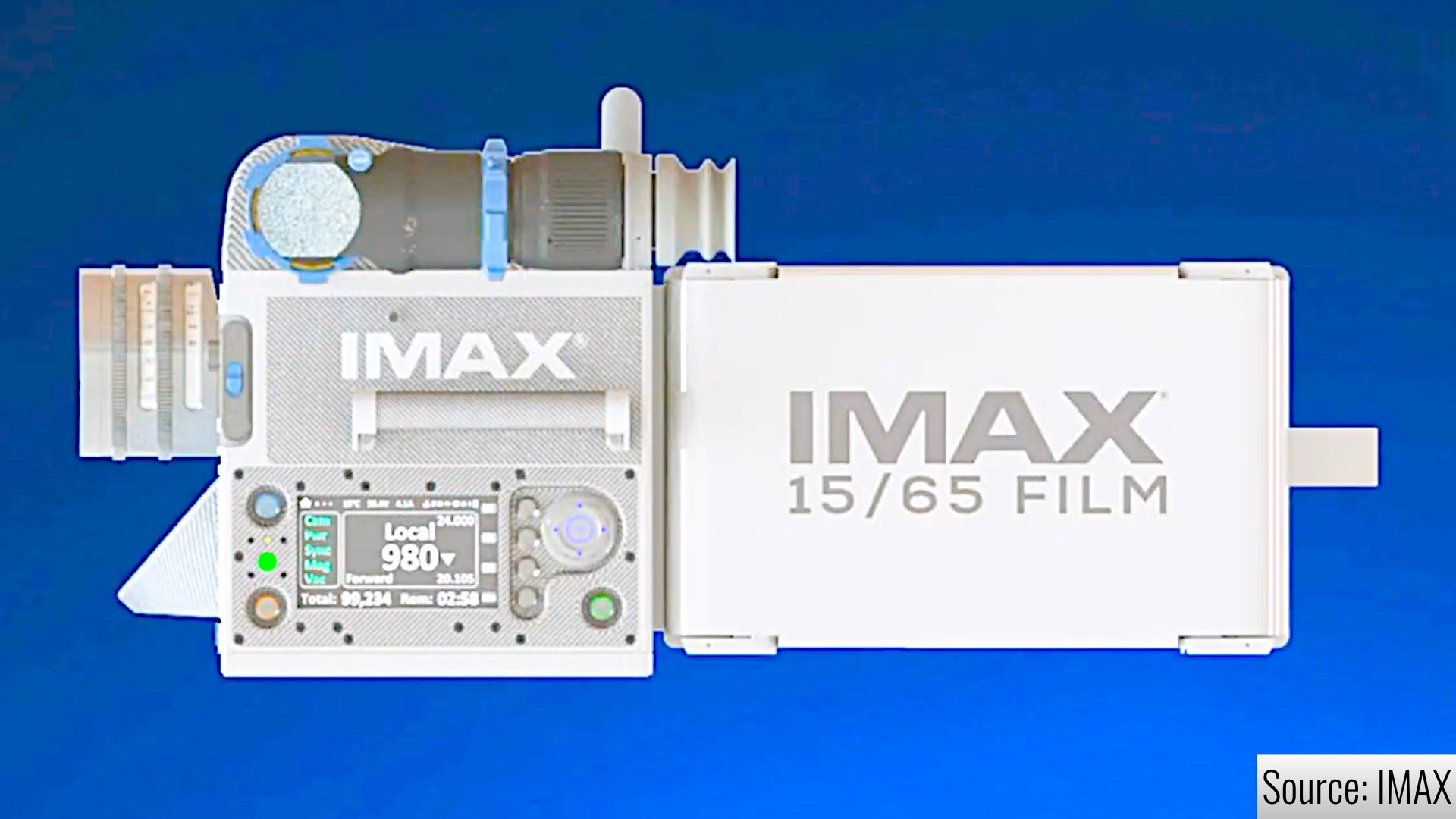
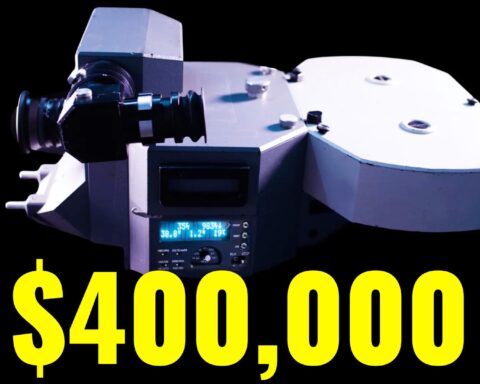
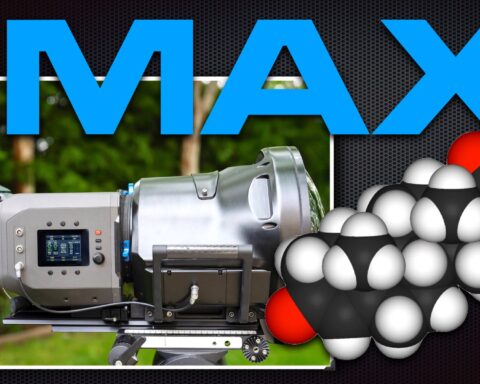



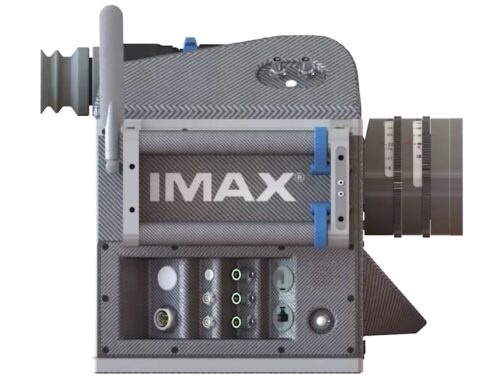

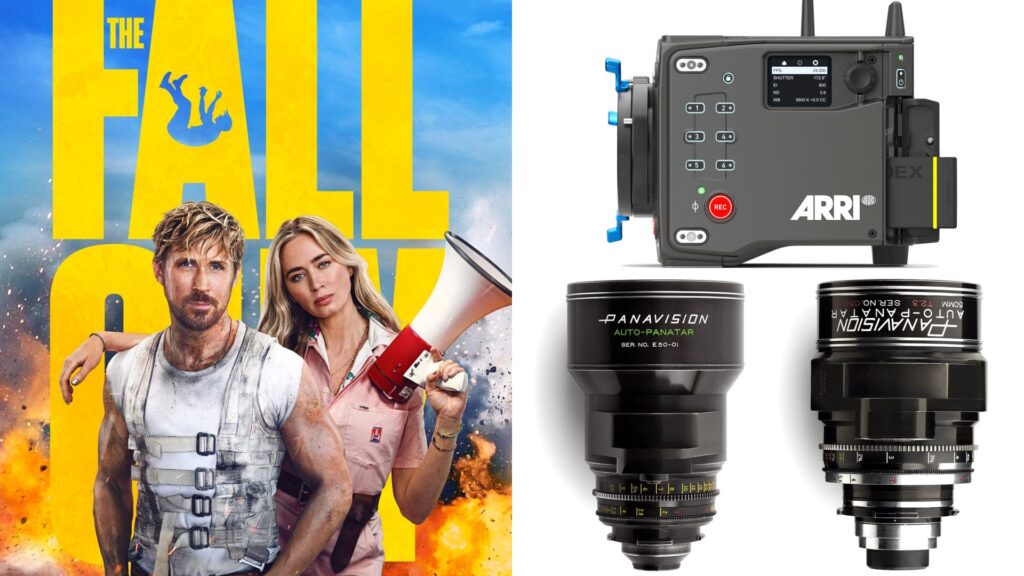


![RED (Nikon) V-Raptor [X] 8K VV is Netflix Approved](https://u7s8g8p6.rocketcdn.me/wp-content/uploads/2024/05/red-v-raptor-x-nikon-netflix-approved-480x384.jpeg)




